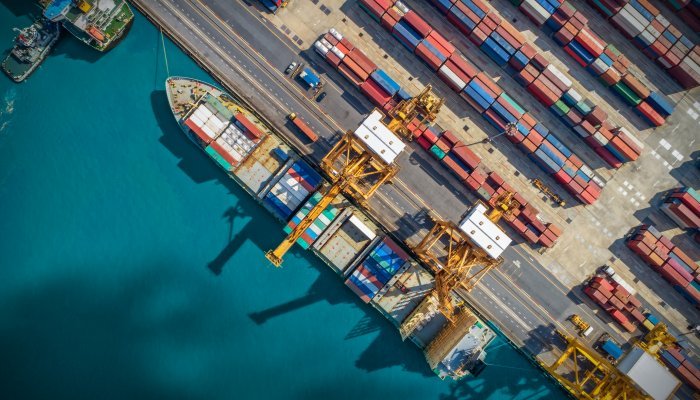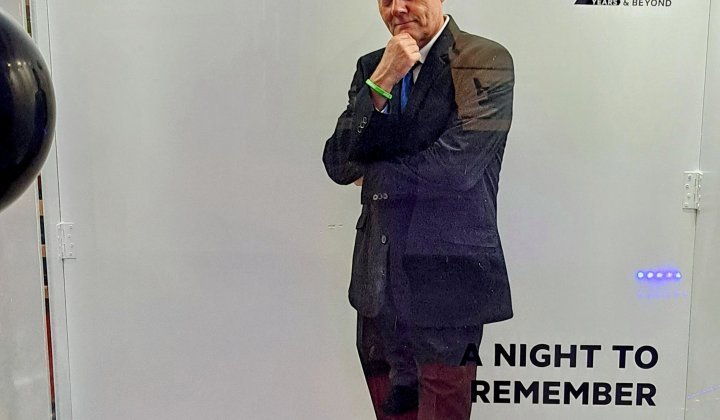The unrest and looting (if that’s all it is) currently plaguing South Africa has wreaked havoc with the country’s supply chains, with warehouses and distribution hubs destroyed and the N3 highway and Durban port affected.
These catastrophic events focus everybody’s attention on a topic that has been simmering for quite a while, which is how we build resilience into supply chains that have become long and complex over the years in response to globalisation. Complex, highly-engineered supply chains make it possible for companies to access expertise and cost efficiencies wherever they exist but, at the same time, expose them to a complex set of new risks.
The Japanese tsunami in 2011, which disrupted the Apple supply chain because certain key components could not be delivered on time, was an early indicator that the brave new world of global connectedness had a downside. Other similar disruptions have regularly occurred, with the most recent being the shortage of semiconductors owing to Coved-19 pandemic-induced slowdowns in Taiwan, which produces over half of these vital components.
Most recently, 15 million Johnson & Johnson vaccines were found to have been contaminated at a third-party plant that was also producing the AstraZeneca vaccine. As a result, Johnson took over the supplier factory to ensure standards were met. In a similar vein, the UK government deliberately ensured that as much of the Oxford AstraZeneca supply chain was located in the United Kingdom as possible, perhaps because of the difficulties experienced in accessing sufficient personal protective equipment, most of which was supplied from outside the country.
“At the peak of the crisis, national borders trumped markets,” noted James Forsyth in The Spectator.1
Professor Justin Barnes, executive director, Toyota Wessels Institute for Manufacturing Studies (TWIMS), says that there is no doubt that supply chains will be rethought in light of these events. Still, he is adamant that to think of supply chains in an either/or way, vertically integrated or not, does not make sense.
TWIMS is a non-profit specialist teaching institution that offers the GIBS PGDip and MBA (manufacturing specialisation), with both courses taught on an extended block release programme by GIBS faculty.
“Companies look at what gives them a competitive advantage – it’s not about choosing a certain model but rather what makes sense to a specific business at a specific time,” he says. “The post-Covid-19 environment will be one of heightened risk, and new models are certain to emerge. I think there will be a general reweighting to incorporate more strategic, sustainability-focused thinking, and to factor in non-financial transactional factors.”
Recent events have driven home the message that supply chains are far from simple and create often-unanticipated vulnerabilities. As a result, he thinks that supply chains will be receiving more serious attention in the future, with a focus on risk.
Barnes says there are, broadly speaking, three main types of supply chains, namely relational, captive and modular. Modular supply chains occur when standard components are in play (such as a sound card, for example) that can be easily substituted. Captives are when a dominant company procures from smaller suppliers, who have little or no negotiating power.
Relational power
Relational supply chains are much more sophisticated and are essentially ecosystems clustered around one primary firm. This lead firm sustains long-term relationships with its vendors, and they eventually start to strategise together and frequently adopt the same IT platforms to enable more seamless collaboration. These vendors invest in achieving the standards that the lead firm requires, and they are not easily substituted.
Khavitha Singh, research lead, lean management at TWIMS, says that when it comes to supply chains, the strategic approach is best and that vendor partnership in the management strategy becomes a critical capability. Traditional vendor management models will not be adequate, and there is a need to move to models based on shared values. Whilst quality and cost are still key variables, striking the right balance is key; mutual benefit across the whole supply chain (inbound and outbound) is also critical.
“The key is for supply chain players to leverage shared benefit in creating value for the end customer,” she says.
Another dynamic within any supply chain is control, which likewise must be balanced with the need to build strategic relationships. One way to achieve both is for the lead firm and its key partners to acquire stock in each other’s companies, thus aligning their interests more closely and providing the platform for deep, strategic conversations.
Such an approach is seen in keiretsu, the Japanese practice of creating loose, informal groups of companies with interlocking shareholdings, which is common in the Japanese automotive industry. Keiretsu also helps to insulate against stock fluctuations and takeovers and promotes the creation of long-term, stable and strategic relationships.
“Keiretsu creates a certain strategic synergy while permitting each company to concentrate on its own competencies,” says Barnes. For the lead company, the big advantage is not having to invest in gaining all these competencies, something that it would have to do if it had opted for a vertically integrated supply chain.
He contrasts this approach with the reverse auctions trialled by Ford and General Motors in the early 2000s, which placed cost as the key metric. It was a disaster. “Especially when it comes to technically advanced products, trust matters; measurements matter,” he says.
The state is another important player in the supply chain as it provides much of the infrastructure – roads, harbours and so on – on which it relies. The destruction in KwaZulu-Natal and then the cyberattack on the Durban port indicate the importance of collaboration between the public and private sectors.
Horses for courses
Barnes’ bigger point is that each supply chain is unique, and companies adapt their supply chains as needed and as the industry norms dictate. The clothing industry is one instance where vertical integration can make sense because of the need for rapid turnaround.
Graham Choice, MD, TFG Merchandise Supply Chain, says that where fashion is concerned, apparel needs to respond quickly to the ever-changing needs of its retail customers. That means that suppliers must be able to get an order onto the racks within 56 days or less of order. Zara, for example, works on 11 stock turns a year, a feat that requires a slick manufacturing and supply chain operation.
Choice used to own factories that supplied TFG but the group bought the manufacturing operations in 2012. The buyout was to fulfil TFG’s need for a scalable, quick-response capability that would allow it to align the manufacturing supply chain with retail demand, emerging trends, and designs.
“Onshoring manufacturing is critical if you are focusing on reducing lead times and inventory days. Adapting international trends and designs to local trends, climate and sizing is essential for success and requires a firm understanding of what’s happening in the rest of the world,” he says.
Even in a vertically integrated model, he emphasises that trust remains important – the captive manufacturer must earn the respect of its internal customers. There must be a constant focus on streamlining business processes, maintaining world-class manufacturing principles and modernising assets and systems. This puts enormous pressure on production managers as inventory at needlepoint is less the 15 minutes needed to complete a particular job – decisions need to be made, and problems solved instantly.
“All in all, quick-response manufacturing is a daunting business, but the return on investment is significant – it includes lower markdowns, more full-price sales and satisfied customers who are getting what they want, quickly,” he says.
It may be argued that another case for vertical integration can be made when an industry is in its infancy. In the early days of the US steel industry, Andrew Carnegie pioneered the concept, purchasing coal and iron ore mines and then the railroads and ships to supply his factories and take his products to market. Tesla is doing the same by setting up battery manufacturing, and other examples exist today.2
Supply chains are vital ingredients of business success but have perhaps not received the intense focus they actually deserve, particularly at a strategic level. The time horizon for strategic reassessments has shrunk in response to an increasingly complex and volatile business environment. Perhaps the real lesson is that supply chain planning has to be as iterative and responsive to changing commercial realities.
Blockchain to play a growing role in supply chains?
If TWIMS’ Khavitha Singh is correct in saying that quality and cost are the two crucial elements that need to be balanced in any supply chain, then there is a good case to be made for increased reliance on blockchain in governing supply chains, especially complex ones.
Blockchain was originally developed as a peer-to-peer system for maintaining records of cryptocurrency transactions on multiple computers. Somewhat like the internet itself in conception, blockchain eschews the more traditional model of a central governance authority (such as a bank, for example) in favour of a decentralised network over which no individual or institution has control. Because of the multiple linkages between blocks of data stored on different machines, information held on the blockchain cannot be changed or expunged. Transactions are permanently recorded and viewable by anyone.3
These characteristics make blockchain attractive to other sectors, and a growing number of use cases are emerging, including the storage of legal contracts, identity documents and company product inventories.
Anushka Soma-Patel, a blockchain enthusiast outside her professional role in IT, believes that blockchain is set to play a key role in supply chains. In particular, she believes that blockchain will play a key role in tracking provenance across supply chains. For example, growing consumer interest in understanding how food is produced in terms of ethical practices or health can be ‘certified’ using blockchain to track each element across the supply chain. The IBM Food Trust is one initiative in this area trying to create an ecosystem of producers, suppliers, manufacturers and retailers to create a smarter, more sustainable food system.
Other uses could be to track produce and goods across the pan-African logistics network, monitor the cold chain, and ensure the ethical sourcing of raw materials or the ethical disposal of toxic products.
In general, the blockchain could play a major role in underpinning the trust that is essential in supply chains, Soma-Patel argues. Looking forward, she envisages that it could be used to automate smart contracts along supply chains, including insurance. “Smart contracts could eliminate duplicate administration and generally facilitate the complex financial arrangements involved in trade,” she says.
1 James Forsyth, ‘Big spenders. Boris and Biden have placed their faith in the power of big government’, The Spectator (June 2021), p 13
2 Brooke Masters, op cit.
3 Investopedia entry on blockchain.
…supply chains are far from simple and create often-unanticipated vulnerabilities.







